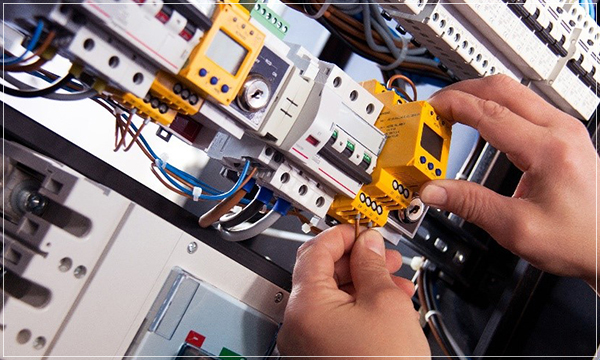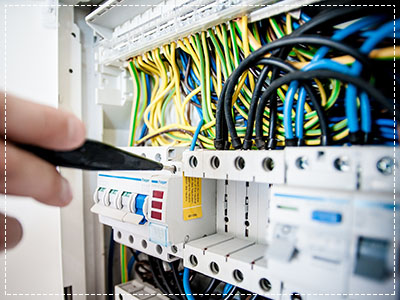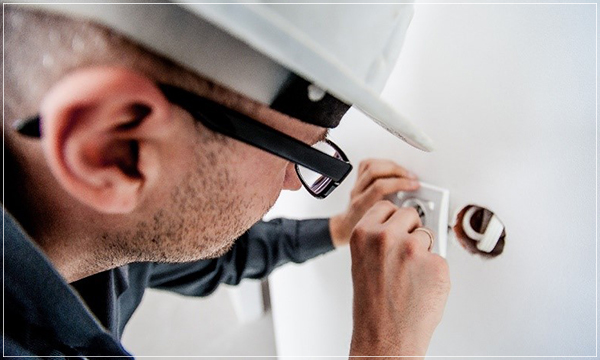CE LVD/EMC | Low Voltage/Electromagnetic Compatibility
The European Low Voltage Directive(LVD) is a directive to protect electrical equipment against electric shock and other electrical hazards within a specific voltage range. These guidelines apply to electrical equipment designed and used with voltage specification for direct current between 70 ~ 1500 V and alternating current between 50 ~ 1000 V. Also, the voltage specifications that apply to these directives are for the electrical input/output voltage, not the voltage inside the equipment.
The Low Voltage Directive also defines the human body’s effects of electromagnetic field radiation from electrical equipment. The Low Voltage Directive is one of the oldest single directives established prior to the introduction of the “New” or “Global” concepts. In a broad sense, it provides a pre-market conformity assessment procedure for a device and the Essential Health and Safety Requirements(HSR) that the device must meet either directly or by harmonized standards, which ensure that equipment is used safely.
This is to prevent personal and property injury or loss from the following hazards that may occur under predicated or unforeseen circumstances.
-
-

-
Applicable Hazard
- 1. Electrical Hazard : When exposed to danger during use such as electronic shock
- 2. Fire Hazard : In case of fire due to overload, short circuit, etc.
- 3. Mechanical Hazard : Risk factors due to mechanical malfunction
- 4. Physical Hazard : Structural risk factors such as falling, external shock, and collapse
- 5. Chemical Hazard : Possible hazards caused by the paint used on the product
-
-
-

-
CE LVD / EMC Certification Procedure
According to 2014/35/EU, it is applied to electrical appliances with a rated voltage of AC50~1000V or DC75~1500V. (However, products listed in Annex II are excluded(Explosion-proof equipment, radiation and medical equipment, electric parts of elevators, electric meters, indoor plugs and socket outlets, electric barbed wire controllers, jamming equipment, special electricity used for ships, aircraft, and railroads complying with safety regulations prepared by international organization device))
-
-
-

-
Detailed Procedure
[ Step 1 ]- 1. In order to carry out CE marking, the manufacturer must understand the EMC Directive that defines the product to be marked. EMC Directive: 2014/30/EU Electromagnetic compatibility (EMC) Directive
- 2. For the suitability of the product, the essential requirements stipulated in the Directive shall be organized by item. The manufacturer must prove that the requirements stipulated in the relevant Directive are met. For this purpose, technical details of the response for safety and risk prevention in product must be described or results of product test and related data must be presented.
- 3. The manufacturer determines the conformity assessment method(applied module) to prove and declare that the product meets the requirements of the relevant guidelines related to CE marking, and conducts conformity assessment accordingly. CE marking conformity assessment stipulates in each Directive to use one or a combination of two modules according to the characteristics of the product among the 8 modules.
- 4. Once the guidelines to be applied to the product have been determined, the European test standards to be tested for each of those guidelines should be determined.
[ Step 2 ]- 1. If the EN standard related to the product has been determined, conduct the test in an accredited institution according to the standard.
- 2. Product tests are used as data to prove the safety and risk response skills of products required by the guidelines.
[ Step 3 ]- 1. For the declaration of conformity, a technical document (Technical Construction Files; T.C.F) that deals with the technical contents for the safety and risk prevention of the product shall be prepared.
- 2. The technical contents to be dealt with in the technical document must be prepared by referring to the relevant guidelines as the required data differs according to the relevant directive.
[ Step 4 ]- 1. In this step, in order to declare the conformity of the Directive, the manufacturer prepares a declaration of conformity based on the quality system certification required for each module and various technical documents, and signs and approves it as a confirmation.
[ Step 5 ]- 1. After completing and approving the declaration of conformity, the manufacturer attaches the labeling information of the product when the product is shipped. The label includes the manufacturer’s name, product related matters and CE marking.
-
2. In general, the details of the technical document are as follows :
- General information about the product and explanation necessary for understanding the operating system of the product
- Installation drawings, design drawings, circuit diagrams, circuit distribution diagram, etc.
- Parts List, test report, design calculation, standard checklist
- Clinical trial data(for MDD), risk factor analysis
- Catalogs, technical data, etc. of important parts or parts exchanged during maintenance
The purpose of this guideline is to ensure safety from electricity by preventing the sale of electrical products that threaten human and animal safety in the European Union. Related products include computers, information technology equipment, household appliances, power tools, laboratory equipment, test and measurement equipment and power supplies. In other words, it is essential for manufacturers planning to sell electrical products to Europe.
-
-
-

-
Post management of CE LVD/EMC certification
CE marked products are cleared through 17 EEA countries’ custom without any restriction. Cleared products can be distributed in the European market without any discrimination.
CE Customs checks the CE marking and accepts the declaration of conformity.
Even for the customs clearance product, if necessary, follow-up management such as sample inspection, along with a request for submission of technical documents, is subject to objections from relevant stakeholders (customers, competitors, and domestic inspection agencies).
CE marking is a system that receives post-management, not a pre-inspection system that can be marketed after receiving pre-inspection and approval of CE marking authority of the member country’s government or mandatory standard. The CE marking authority will voluntarily, or when a stakeholder reports or a problem occurs, collects the products distributed on the market and conducts a document inspection related to conformity of standards and, if necessary, conducts a safety inspection of the product.
-
Related Services from IGC
01System certification (ISO 13485, ISO 15378, ISO 14155)
02Product certification (European CE certification, clinical evaluation, medical device registration [Eurasia, China, USA, Thailand, Taiwan])
03Certification of Auditor Qualifications
04Professional manpower training and education
